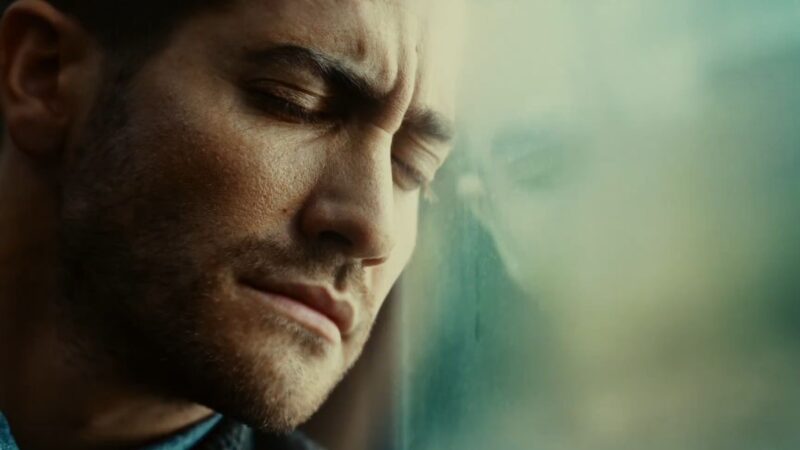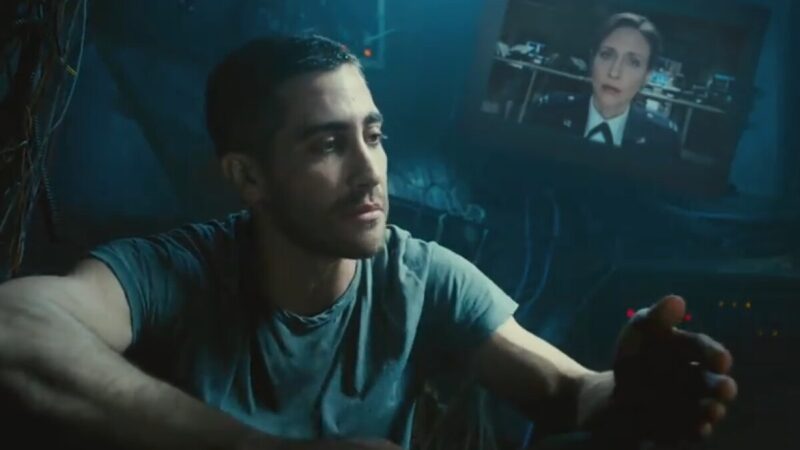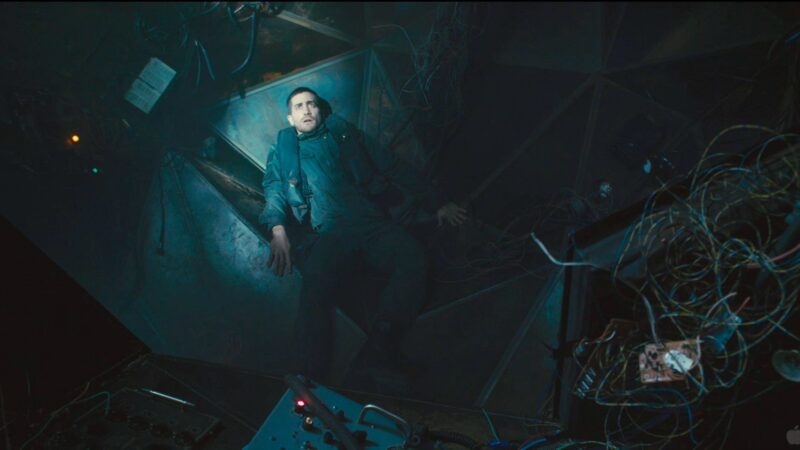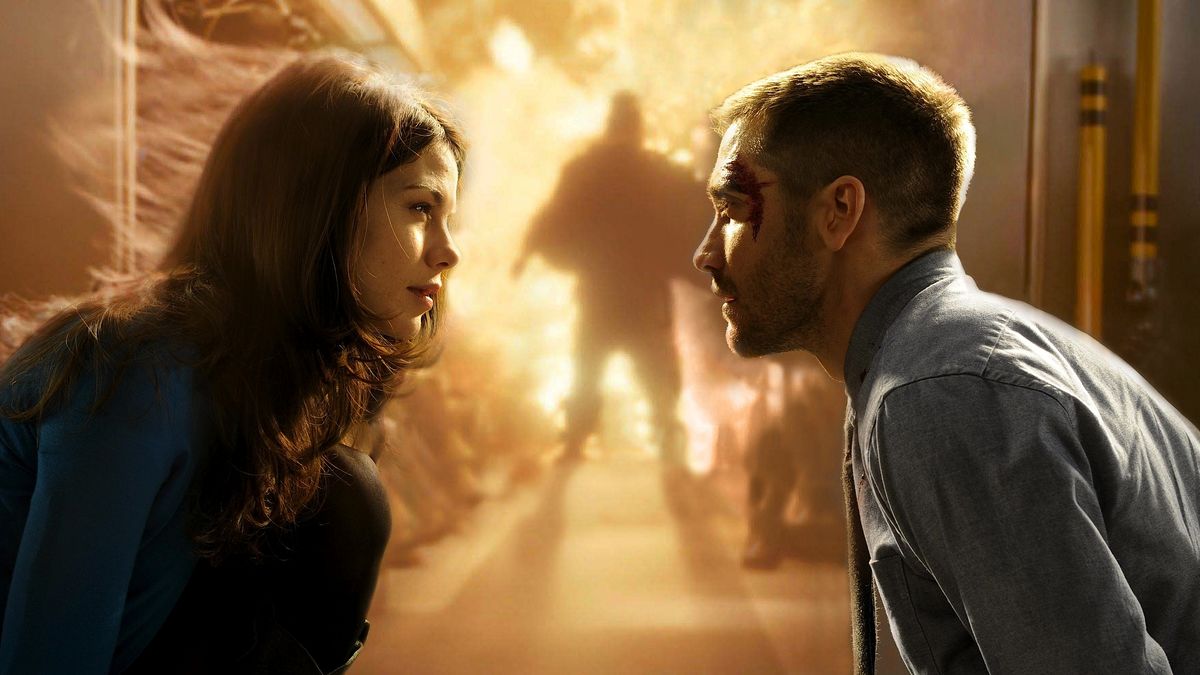Welcome to our Colossus Movie Guide for Source Code. This guide contains our detailed library of content covering key aspects of the movie. We encourage your comments to help us create the best possible guide. Thank you!
What is Source Code about?

Source Code is all about alternate realities—the scientific ones that are possible, and the philosophical ones we create in our minds. There’s an underlying tension throughout the film between these two beliefs. As a scientist, Rutledge says Source Code is nothing more than a simulation. But Stevens believes in a deeper reality beyond our mortal understanding of life. He refuses to accept that there’s one set path. As someone who has many regrets, who is fearful he didn’t live his life to the fullest, he must fight for the semblance of reality that Source Code presents. In effect, the movie becomes a meditation on embracing the precious little life we’re given, on the importance of second chances, on how to observe your life’s path as full of alternate realities you could be living.
Movie Guide table of contents
Cast
- Jake Gyllenhaal – Captain Colter Stevens
- Michelle Monaghan – Christina Warren
- Vera Farmiga – Captain Colleen Goodwin
- Jeffrey Wright – Dr. Rutledge
- Michael Arden – Derek Frost
- Russell Peters – Max Denoff
- Scott Bakula – Donald Stevens, Colter’s father
- Frédérick De Grandpré – Sean Fentress
- Cas Anvar – Hazmi
- Ben Ripley – Writer
- Duncan Jones – Director
The ending of Source Code explained

There are two ways to explore this ending. First, we can discuss the logistical plot mechanics of the ending and how multiple universes are formed. Then, we can dig into the deeper thematic material and what that all means.
How Source Code works
Let’s start with the basics by looking at how the “Source Code” technology works in the film. It is an experimental program that allows someone to inhabit another person’s body in the last eight minutes of their life. This isn’t traditional time travel—the user is instead sent into an alternate reality or version of events. The technology is based on the idea that the brain holds onto a short “afterglow” of electrical activity after death, which the program can access and utilize.
Here’s a breakdown of how it works and what happens to Stevens throughout the movie:
- The Mission: Stevens, an Army helicopter pilot, wakes up on a commuter train headed to Chicago. He’s disoriented because the last thing he remembers is his helicopter crashing in Afghanistan. He’s informed by his mission controller, Goodwin, that he’s part of a mission to find a bomber who blew up the train. By reliving an eight-minute loop of one of the passenger’s lives, he can gather clues to prevent a larger, impending attack.
- The Reality of Stevens: As the story unfolds, we discover that the real Stevens is critically injured and kept alive within a life support pod. His consciousness, however, is linked to the Source Code program. He’s effectively a brain in a vat, with his body being non-functional but his mind still active.
- Repetitive Cycles: Each time Stevens is sent back into the Source Code, he relives the same eight minutes, but with the ability to take different actions. Every cycle offers new insights, challenges, and clues about the bomber. With each iteration, Stevens becomes more determined to not only find the bomber but also to save the people on the train, especially Christina, a woman he grows close to during the mission.
- Discovery of His Own State: As Stevens starts to question his own reality and the morality of the Source Code project, he coerces Goodwin to reveal the truth about his physical state. He learns that he’s been kept alive artificially after his near-fatal crash in Afghanistan and that the Source Code project is his last way of serving his country.
- Resolution: Towards the end, Stevens asks to be sent back one last time with a request to be disconnected (effectively ending his life) after the mission. However, after successfully preventing the bombing in one of his iterations, he ends up creating a new alternate reality where the train explosion never occurred. Instead of being shut down, as he requested, Stevens’ consciousness lives on in this new reality, giving him a chance at a fresh start.
Quantum physics and alternate realities
The concept of alternate realities in Source Code is rooted in the idea of the multiverse or parallel universes, a theory posited by some interpretations of quantum physics. The film suggests that every choice or action can lead to a branching of realities, each representing a different set of outcomes based on those decisions.
So let’s quickly discuss the field of quantum physics and what it studies. Now, I am by no means an expert—in fact, I know very little. But after some light research, I have a pretty good grasp on the field and how its basic principles apply to Source Code technology and the creation of multiple universes.
Quantum physics, often simply referred to as quantum mechanics, is a branch of physics that delves into the behavior of the tiniest particles in the universe, such as atoms, photons, and even subatomic particles like electrons and quarks. This realm is drastically different from the macroscopic world we observe with our senses.
Here are some key points about quantum physics that will help us with understanding the ending of Source Code:
- Quantum States: At the quantum level, particles don’t have definite states (like definite positions or velocities) until they’re observed. Before observation, they exist in a superposition, which is essentially a combination of all possible states.
- Entanglement: Two or more quantum particles can become intertwined or “entangled” in such a way that the state of one particle immediately influences the state of the other, regardless of distance between them.
- Wave-Particle Duality: Quantum entities, like light or electrons, can exhibit characteristics of both particles and waves.
- Probability: Quantum mechanics operates on probabilities. Rather than giving definite outcomes, it offers a probability distribution of potential outcomes.
- Quantum Fields: All particles are excitations in underlying quantum fields. Quantum field theory (QFT) combines quantum mechanics with special relativity to describe the behavior of particles.
The concept of alternate realities in Source Code can be loosely tied to certain interpretations of quantum mechanics. The many-worlds interpretation (MWI) suggests that every quantum event results in a branching of the universe: for each possible outcome of a quantum interaction, there’s a separate branch of the universe where that outcome is realized.
In simple terms: imagine you’re at a crossroads, deciding whether to go left or right. In our everyday understanding, you’d choose one, and that’s the end of the story. But according to the many-worlds interpretation, in one universe you go left, and in a parallel universe, you go right. Both realities exist concurrently but are separate from each other.
Now, relating to Source Code: Every time Stevens enters the Source Code and makes a decision or alters an event, he is branching off into an alternate reality. While the film does not deeply delve into the intricacies of quantum mechanics, the idea that different choices create separate realities aligns with the many-worlds interpretation. Stevens’ repeated entries into the Source Code result in numerous realities, each a result of the different choices he made during those 8-minute spans.
Now let’s look at those five key points about quantum physics and how they apply to the alternate universe logic of the film:
- Quantum States: Every time Stevens enters the Source Code, he is presented with the potential to enact a range of outcomes based on his choices. The final outcome isn’t “observed” or “realized” until his actions play out in those eight minutes. In this way, each entry into the Source Code is a bit like exploring a specific collapse of superposition—a specific sequence of events from the myriad possible outcomes.
- Entanglement: Stevens’ consciousness becomes “entangled” with that of Sean Fentress, the man on the train. Changes in one (like Stevens gaining knowledge in the Source Code) seem to have effects on the other (as seen when Stevens, in Fentress’s body, carries those memories into a new iteration).
- Wave-Particle Duality: While not a direct correlation, the dual nature of Stevens’ existence—both in the real world as a critically injured soldier and within the Source Code as Sean Fentress—mirrors the duality concept. He exists in two “states” or “forms,” similar to how particles can be viewed as having both wave and particle properties.
- Probability: Every entry into the Source Code represents a play on probabilities. While Stevens aims for a specific outcome (finding the bomber), there are numerous possible scenarios and results based on his actions. It’s uncertain which choice will lead to the desired outcome, so he must navigate through probabilities each time.
- Quantum Fields: The Source Code technology itself can be thought of as a “field” in which different realities (or excitations) manifest. Every time Stevens enters this “field,” a new reality or set of events manifests based on his interactions and decisions.
Mind you, some of these correlations are loose, which means the scientific logic of this movie isn’t completely sound. The movie is much more concerned about characters and themes than science. So let’s get into what all of this means on a deeper, philosophical level.
The deeper meaning: science vs. philosophy
Throughout the movie, there is much tension between Goodwin and Rutledge’s focus on science and logic in the very real Source Code facility and Stevens’ focus on philosophy and existence in a vessel of his mind’s creation. As a soldier, Stevens was all about putting his head down and completing his mission. But on the other side of death, and in the midst of inhabiting someone else’s body, and after watching dozens of people die over and over on the train, he comes to have a different understanding of life and what it means to live.
The conversation between Stevens and Goodwin just before Stevens enters the Source Code for one last time sheds much light on the movie’s deeper meaning:
Stevens: Are you married
Goodwin: No, I’m divorced.
Stevens: Do you think there’s an alternate version of you? A Goodwin who made different choices?
Goodwin: What do you mean?
Stevens: Like a “you” that didn’t get married. That didn’t get divorced. Just married someone else. A woman who took a different fork in the road?
Goodwin: No, I don’t, Captain. What you experienced was a shadow. It was an afterimage of a victim on a train. This is real life. Here.
Stevens: The one where you’re talking to a dead helicopter pilot?
Goodwin: The program wasn’t designed to alter the past. It was designed to affect the future. And you’ve done that.
Stevens: I missed something, Captain. That train shouldn’t have blown up. There must have been a second detonator, something I couldn’t see. A fail-safe.
Goodwin: It’s a computer program, Captain. The girl on the train. The others. They’re lost. I’m sorry about that.
Stevens: I get it. I get it. I know. Quantum physics, parabolic calculus. You’re wrong, Goodwin. You’re just plain wrong.
Goodwin: Captain, Christina is dead.
Stevens: She doesn’t have to be, ma’am.
Quantum physics aims to be an exact science. For every problem, for every lingering question we have about time and space and how it all works, there’s a definable answer. So every time Stevens presents a counterpoint to the “science” of Source Code and how it works, Goodwin and Rutledge have an answer. Any interpretation that would disrupt that answer would rip a hole in how we’ve come to understand time and space from an objective standpoint.
But the beauty of quantum physics is that there’s an inherent philosophy associated with it. And philosophy is not an exact science by any means. It is a field that is constantly discussed and debated and updated. Science aims to provide a concrete, one-and-done answer to life’s problems, while philosophy believes we will never find the right answer, that the eternal search for meaning is what makes life worth living. Our understanding of existence is never complete, but more and more complex—yet satisfying—as time trudges on.
Rutledge explains how quantum physics allows for Stevens to exist in Sean’s afterglow—the science tells us that he only experiences those eight minutes before moving on. Which means that at the end of the movie, Stevens isn’t living in an alternate reality according to Rutledge’s science. That could be the truth, which would mean that Stevens never contacted Goodwin in an alternate universe and only imagined he did.
But…Stevens died. Which means he cannot be part of any further simulations. Which means the alternate universe must exist, right?
Here we have to consider the “art” of the film. If movies and stories were only concerned with logic and “what definitively happened,” then there’s no reason to believe that Stevens would live on in this moment. Yet, as we’ve seen from our discussion of quantum mechanics, there’s a possibility that the science can be bent to make it work. And that attempt to make it work is where the art of director Duncan Jones and writer Ben Ripley comes in.
Maybe the point of Source Code‘s ending isn’t to make you believe that the science could work this way—perhaps the deeper intention is to show that our understanding of existence can stretch beyond what science could ever possibly tell us. Just because Rutledge’s science doesn’t allow for Stevens to save everybody on that train…doesn’t mean it’s not important for Stevens to save everybody on that train. Because saving everybody on that train is what truly brings closure to Stevens at the end of his life, is what allows him to find peace as he looks back on every poor decision he made and every relationship he didn’t covet and every action he regrets.
So perhaps what we’re seeing at the end of Source Code isn’t a physical alternate reality, but instead a philosophical one—a world where Stevens make a pivot and have a new lease on life. In this way, “alternate realities” exist in our everyday.
For example, say you’re a manager at work. And you’ve always been annoyed by one of your employees some some trivial reason. And because of it you’ve always been a bit distant, a bit discouraging. And one day, you realize that your behavior has not only killed their work performance, but made them a bit depressed. So you change your tune. You start noticing the things you like about the person and what makes them great. You encourage certain aspects that improve their job performance. And, eventually, that person realizes their full potential at work, and their job becomes a fulfilling part of their life. Which triggers a fundamental shift in their everyday that allows them to become a fuller, more realized human being that is kinder and more compassionate to everybody around them. Overall, they become a much more positive force and affect meaningful change in the world because of it.
Now…you could have continued to be distant from that employee. Which would have created an entirely different world that would have not only been less fulfilling for you—because you never experienced the growth of becoming more accepting of people for what you perceive to be faults—but less fulfilling for the employee and everybody the rejuvenated employee would have affected. Even though you can only choose one path, both realities “exist” in the sense that you can imagine what would have happened in the path you didn’t choose.
Knowing about all those potential divergent paths is a necessary part of philosophy, and necessary component of our growth. We are constantly pushing ourselves to become better versions of ourselves, which inevitably means considering paths we didn’t take. Quantum physics forces us to consider the reality of these paths and how we choose to understand them not from a scientific standpoint, but a philosophical one. Just because we’re told that “only one path exists” doesn’t mean that the other paths don’t affect us. And realizing this is important for Stevens’ closure at the end of the film, and challenges Goodwin’s resolute attachment to science.
The themes and meaning of Source Code

Redemption and second chances
Think of this an extension of what we discussed in the ending explanation. There is a science-vs-philosophy conversation to be had about multiple universes. While certain aspects of quantum physics allow for the possibility, Rutledge’s understanding of the science does not. Yet, from a philosophical standpoint, there will always different possible paths we take. And those paths, whether they exist or not, still have a profound effect on us and change how we think and act—and, thus, change the world.
The philosophical approach is a profound way of thinking about second chances. Because sometimes you do make the wrong choice. You don’t study hard enough for your math exam. You don’t fully embrace your writing abilities and finish your first novel before the age of 30. You don’t make the most of your relationship with your father before he passes away. But you can make up for your poor test score by studying harder for the next one. And you can start believing in yourself more and write a better novel than you would have ever written before 30. And you can choose to form a deeper relationship with your own children so they don’t someday feel the regret you felt about your own father.
Essentially: you don’t need quantum physics, you don’t need a physical alternate reality to make amends. We all deserve second chances, and we can all have second chances. It just depends on how you look at life and how all those diverging paths ultimately define you.
Sacrifice and duty
Part of Stevens’ philosophical journey is realizing his duty—to both others and to himself. As a U.S. Army pilot, Stevens has an inherent commitment to the greater good. But by reliving the same eight minutes over and over, by witnessing the death of so many people over and over, he gains a more nuanced understanding of the fragility of our existence.
This lends a deeper plight to his mission. Because Stevens isn’t just carrying out orders given to him by a superior. He’s not just flying above the messy reality that is war. The Source Code puts Stevens in it—he becomes deeply entangled in these people’s lives. His actions and his decisions, while part of a simulation, continually lead to the death of so much and so many. Every time he chooses wrong, somebody hurts, somebody dies. This plays into the philosophical discussion of “alternate universes” set up by the movie’s ending.
That’s why Stevens can’t be satisfied with Rutledge and Goodwin’s science. While they say that it’s just a simulation, that Stevens cannot save everybody on the train…it’s Stevens duty to save everybody on that train. While he might not be able to save them in real life, he can save them in his heart and soul. He can be forever changed by witnessing these people make it past the eight-minute barrier.
To achieve this, Stevens must embrace the reality of sacrifice. He must sacrifice this existence, the reality he knew as true, and embrace a new world where everybody can live on because he chose death. His sense of duty reaches new heights.
Why is the movie called Source Code?

It’s an interesting title. Obviously, “Source Code” refers to the technology created by Rutledge. And his understanding of technology is purely based in quantum physics. But, as we’ve discussed several times in this piece, there’s an inherent philosophical component attached to the field of quantum physics and the study of time, of space, of existence. So how does the title Source Code play into this idea?
The very term “source code” refers to coding, as in the coding of the particular existence the technology is recreating. In this case, it’s the life of Sean Fentress. What Stevens sees as Sean is nothing more than a simulation—a bunch of ones and zeros recreating a parallel reality that never actually existed. This reality’s entire state is based upon information Sean had about the people and the setting. Thus, it is not reflective of Sean’s actual reality. It’s merely simulating reality.
Yet…it feels very real to someone like Stevens. This gets at a deeper understanding of the “source code” that makes up everyday life. Rutledge’s technology might use science to mimic reality, but existing as Sean feels like reality to Stevens. He still cares for people, he still has regrets, he still wants to enact meaningful change. Despite all the scientific jargon that Rutledge and Goodwin throw out, it doesn’t make Stevens less motivated to enter Source Code one last time and save everybody on that train.
The movie’s title, and the story’s premise, grapples with the nature of time. The concept of revisiting and potentially altering a fixed point in time suggests that our understanding of linear time may be limited. Philosophically, it brings forth questions about determinism, free will, and the nature of past, present, and future. That these ideas are beyond our mortal understanding, that the way we view our time on Earth stretches beyond ourselves and what we accomplish in our physical bodies. We each have our own source code that can be studied and rearranged and understood.
Important motifs in Source Code

Mirrors and reflections
Reflections are a huge component of Stevens’ journey and self-discovery. When Stevens first wakes up on the train, he rushes to the mirror only to discover that he’s not himself—he’s Sean Fentress. In the literal sense, it’s a disorienting confrontation with an altered identity. But symbolically, this moment becomes a tangible representation of Stevens’ internal struggle, a vivid realization that he’s inhabiting a reality that isn’t entirely his own. He has a host of problems to deal with as his normal self—and now he’s somebody else.
The very essence of the Source Code technology is predicated on the idea of an alternate, albeit temporary, reality. In this way, his “reflection” becomes representative of an alternate life he coudl lead. Mirrors, in their nature, present a version of our world—sometimes clear, sometimes distorted. Stevens is consistently navigating these mirrored realities: one within the confines of the Source Code and the other in the outside world. The distinction between these two, the real and the simulated, becomes increasingly blurred. The use of reflections serves to underscore this theme, constantly asking the audience and Stevens himself to question the nature of the reality he’s experiencing.
This is why the ending of the movie is so great. Stevens, in Sean’s body, goes to Cloud Gate—aka “the bean” just outside Millennium Park in Chicago—which presents a distorted view of him, of Christina, of the entire world. Despite what you think you see, things are not what they seem.
Time and the “countdown”
The ticking clock that constantly inches Stevens and the rest of the commuters towards death serves a very symbolic purpose that informs Stevens’ journey. The countdown comes to represent the fleeting nature of existence and the limited time we all have to make an impact or alter our paths. Thanks to this set-up, Stevens (as well as the audience) is constantly reminded of how brief and precious moments in life can be.
As Stevens grapples with understanding his own situation, the true nature of the Source Code, and the reality of his existence outside of it, time becomes emblematic of his own life slipping away. The countdown doesn’t just represent the impending train explosion; it echoes the dwindling time Stevens has as he comes to terms with his own mortality. The consistent resetting of the clock also presents a double-edged sword. On one side, it offers hope—a new chance to find the bomber and save lives. On the other, it’s a cruel reminder of Stevens’ entrapment, forcing him to relive trauma and failure, again and again.
The train
The train is a very interesting motif because run on a schedule, and relies on repetition and routine. This, obviously, is not reflective of Stevens’ situation. He is always on the clock, which forces him to reconsider the grand weight of time. While it might feel long and arduous in the moment, leading one to languidly flow through life and fail to take advantage of all its wondrous possibilities, life can also disappear in a flash. This experience gives a sense of urgency to a setting where everybody is comfortable with the confinement and control of train travel.
Memory and flashbacks
Memory, in the context of the film, is a fluid yet foundational aspect of Stevens’ experience. His memories of his life as a helicopter pilot in Afghanistan, juxtaposed against the constructed reality of the Source Code, form the bedrock of his identity. These memories anchor him, serving as his primary touchstone of “self” amidst the disorienting cycles of the Source Code. This use of memory delves deep into questions of what defines our identity. Is it our current experiences, or is it the accumulation of our past, crystallized in memories?
The distinction between memory and the “present” within the Source Code becomes increasingly blurred as the story unfolds. The vividness of Stevens’ experiences on the train, paired with his growing emotional connection to Christina, challenges the nature of authentic memory. If an experience feels genuine, with tangible emotions and repercussions, does it matter if it’s a constructed reality or a genuine memory? This tension plays out beautifully in the film, emphasizing the fragility and subjectivity of human memory and experience.
Questions & answers about Source Code

What happened to Sean at the end of Source Code?
This all depends on how you view the ending. If we’re going with my personal favorite theory that multiple universes exist, then the answer is quite simple. When Stevens enters the Source Code for one last time, his time doesn’t end after eight minutes. Instead of being pulled out as usual, Stevens continues to exist within this alternate reality. The film suggests that this version of reality continues and becomes a branching timeline. In this new reality where the train bombing was prevented, Sean Fentress’s body is still inhabited by Stevens. The movie ends with Stevens in Fentress’s body sending an email to Goodwin, explaining the potential of the Source Code not just as a tool for prevention but for creating alternate realities.
Basically, the original Sean Fentress died in the primary reality’s train explosion. In the alternate reality where the bombing was prevented, Stevens continues to inhabit Fentress’s body, effectively replacing him in that timeline. The fate of Sean’s consciousness or “soul” in this alternate reality is left ambiguous and is one of the philosophical questions posed by the film.
Who planted the bomb in Source Code?
The bomb on the train was planted by Derek Frost. He’s initially an unassuming character, but as Stevens continues to investigate through repeated simulations, he identifies Frost as the bomber. Frost’s motivations are revealed to be rooted in a twisted desire to make a statement about creating rubble so the world can rebuild (similar to the “destruction serves as a form a creation” idea in Donnie Darko). He not only plants the bomb on the train but also intends to detonate another bomb Chicago, which Stevens must prevent.
Thematically, this plays into Stevens’ journey. Derek is an antagonistic force in this alternate reality that’s preventing Stevens from saving everyone on the train and starting anew in Sean’s body.
Now it’s your turn
Have more unanswered questions about Source Code? Are there themes or motifs we missed? Is there more to explain about the ending? Please post your questions and thoughts in the comments section! We’ll do our best to address every one of them. If we like what you have to say, you could become part of our movie guide!

